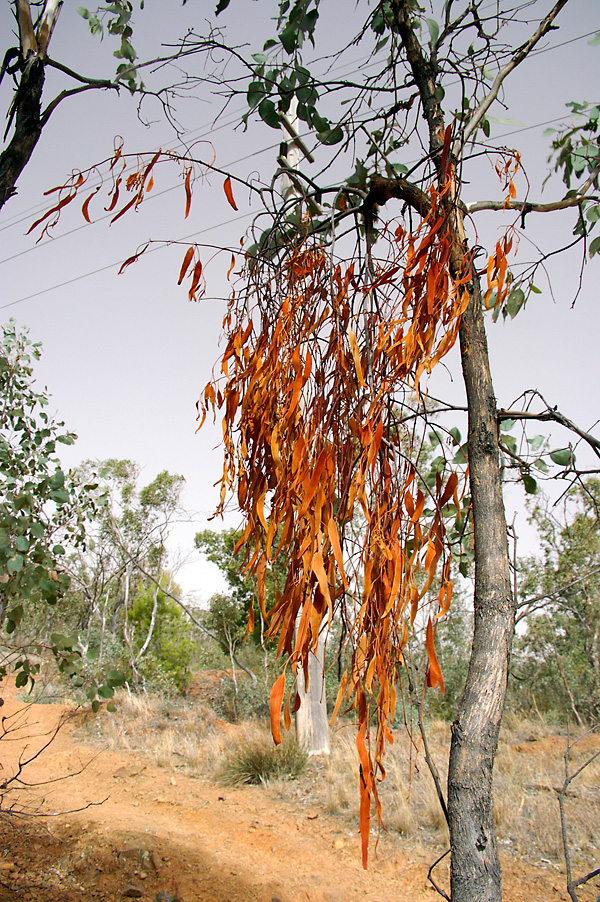
|
AmyemaMistletoeFamily: Loranthaceae (Mistletoes) Mistletoes are parasitic shrubs that draw part of their nourishment from the host tree that they grow on. The fruits are edible by humans and birds, including the mistletoe bird which helps spread the plant to other trees. The fruit has a sticky, gelatinous, glucose-rich pulp around a single seed. Amyema pendulum is a common species found in the Sydney region. The photo below shows a dead Amyema pendulum, I will put a photo of a live one up when I find one. (I think I have a copyright-free one in my collection but there are thousands of photos to look through to find it.) The leaves of live species look a lot like the leaves of the host trees, making them sometimes hard to find. Often the leaves look more reddish than the host trees, and sometimes they are easiest to find when they are dead, since then they stand out from the leaves of the host tree.
Bush Tucker Plant Foods - Fruits Content is copyright © Survival.org.au 2005-2026 All Rights Reserved. Terms of Use. Definitely read the disclaimer before trying anything from this website, especially including the practices and skills. This website uses affiliate links – this doesn't cost you any more, but I get a commission on purchases made through the website. As an Amazon Associate I earn similarly from qualifying purchases. |

